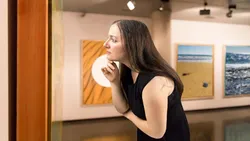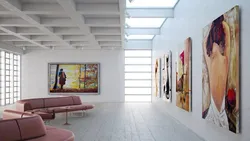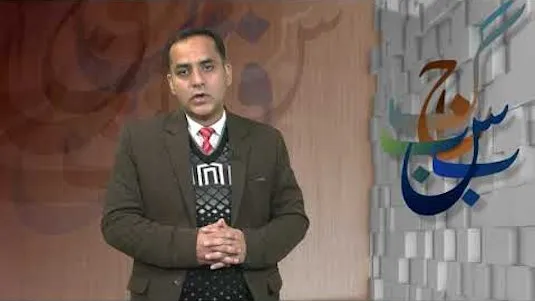
The Places of Teaching Artistry 
Discover the fundamentals of The Places of Teaching Artistry ▼
ADVERTISEMENT
Course Feature
![]() Cost:
Cost:
Paid
![]() Provider:
Provider:
Kadenze
![]() Certificate:
Certificate:
Paid Certification
![]() Language:
Language:
English
![]() Start Date:
Start Date:
On-Demand
Course Overview
❗The content presented here is sourced directly from Kadenze platform. For comprehensive course details, including enrollment information, simply click on the 'Go to class' link on our website.
Updated in [May 19th, 2023]
The Places of Teaching Artistry is a course that focuses on the use of place as an enabling driver of creative projects. It is part of the 4-course program, The Basics of Teaching Artistry. This course is based at the Sydney Opera House, and explores how architecture, location and environment can be used by teaching artists to shape purpose and develop projects. Through play, experimentation and questioning, students will learn how to use place to inspire artistry in others in situated, relevant and unexpected ways.
[Applications]
Upon completion of this course, students will be able to apply their knowledge of place and environment to their teaching artist projects. They will be able to use architecture, location and environment to shape purpose and develop projects. Students will also be able to use play, experimentation and questioning to provoke new ways of seeing location and to bring personal and political lenses to activate the artistry of others in situated, relevant and unexpected ways.
[Career Paths]
1. Arts Education Administrator: Arts education administrators are responsible for overseeing the development and implementation of arts education programs. They work with teachers, artists, and other stakeholders to ensure that the programs are effective and meet the needs of the students. They also manage budgets, develop curriculum, and evaluate the success of the programs. As the demand for arts education increases, the need for qualified arts education administrators is expected to grow.
2. Arts Education Consultant: Arts education consultants provide advice and guidance to schools, organizations, and other stakeholders on how to best implement arts education programs. They work with teachers, artists, and other stakeholders to develop and implement effective arts education programs. They also provide advice on how to best use the resources available to ensure the success of the programs.
3. Arts Education Researcher: Arts education researchers conduct research on the effectiveness of arts education programs. They analyze data, evaluate programs, and develop recommendations for improvement. They also work with teachers, artists, and other stakeholders to develop new programs and evaluate existing ones. As the demand for research-based arts education programs increases, the need for qualified arts education researchers is expected to grow.
4. Arts Education Advocate: Arts education advocates work to promote the importance of arts education in schools and other organizations. They work with teachers, artists, and other stakeholders to raise awareness of the benefits of arts education and to advocate for increased funding and resources for arts education programs. As the demand for arts education increases, the need for qualified arts education advocates is expected to grow.
[Education Paths]
1. Bachelor of Arts in Education: This degree path focuses on the development of teaching skills and strategies for the classroom. It covers topics such as curriculum design, classroom management, and assessment. It also provides an understanding of the history and philosophy of education, as well as the social and cultural contexts of teaching. This degree path is becoming increasingly popular as more schools and universities recognize the importance of teaching artistry in the classroom.
2. Master of Arts in Education: This degree path focuses on advanced teaching strategies and research methods. It covers topics such as educational technology, educational psychology, and educational leadership. It also provides an understanding of the history and philosophy of education, as well as the social and cultural contexts of teaching. This degree path is becoming increasingly popular as more schools and universities recognize the importance of teaching artistry in the classroom.
3. Doctor of Education: This degree path focuses on the development of research and leadership skills in the field of education. It covers topics such as educational policy, educational administration, and educational technology. It also provides an understanding of the history and philosophy of education, as well as the social and cultural contexts of teaching. This degree path is becoming increasingly popular as more schools and universities recognize the importance of teaching artistry in the classroom.
4. Master of Fine Arts in Teaching Artistry: This degree path focuses on the development of creative and artistic skills in the field of teaching artistry. It covers topics such as visual arts, music, and theatre. It also provides an understanding of the history and philosophy of teaching artistry, as well as the social and cultural contexts of teaching. This degree path is becoming increasingly popular as more schools and universities recognize the importance of teaching artistry in the classroom.
Course Provider

Provider Kadenze's Stats at AZClass
Discussion and Reviews
0.0 (Based on 0 reviews)
Explore Similar Online Courses

Building and Orchestrating Containers with Docker Compose

Code a Snake Game with Python and Pygame - Tutorial

Python for Informatics: Exploring Information

Social Network Analysis

Introduction to Systematic Review and Meta-Analysis

The Analytics Edge

DCO042 - Python For Informatics

Causal Diagrams: Draw Your Assumptions Before Your Conclusions

Whole genome sequencing of bacterial genomes - tools and applications

Art 104: History of Western Art II

Art 103: History of Western Art I

Study of Art History of Prose Forms of Urdu (AECC)
 Related Categories
Related Categories
 Popular Providers
Popular Providers
Quiz
 Submitted Sucessfully
Submitted Sucessfully
1. What is the focus of the Sydney Opera House teaching artist projects?
2. What is the purpose of exploring place as an enabling driver of developing creative projects?
3. What is the goal of using architecture, location and environment to inspire teaching artists?


Start your review of The Places of Teaching Artistry